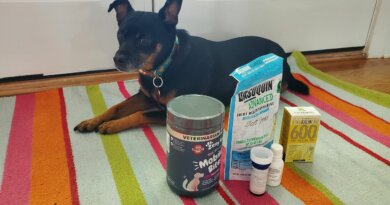Can Dogs Get Lice? Tips And Tools To Protect Your Dog – CanineJournal.com
To sustain this free service, we receive affiliate commissions via some of our links. This doesn’t affect rankings. Our review process.
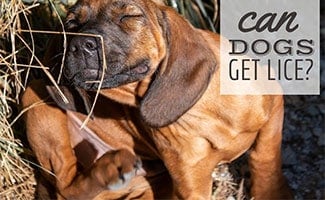
Article Overview
What Are Dog Lice?
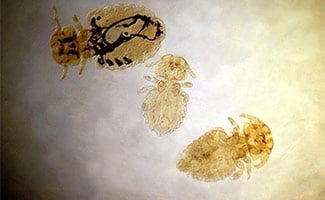
Dog lice live their entire life cycle on their host. There are 3 stages in the life cycle of lice: nit, nymph and adult. They start as eggs, aka nits, which glue to the dog’s hair when laid. When they hatch, they’re called nymphs. They look just like adult lice but are smaller. They grow into adults in about a week, and they live a total life span of 2 to 4 weeks. Females lay eggs their entire life to keep the cycle going.
Human Lice vs Dog Lice
Lice are species-specific. That means that human lice live on humans and need human blood, skin and debris to live and dog lice live on dogs and need dog blood, skin and debris to live. This means that you can’t give lice to your dog and vice versa. Your cat is also safe since dogs can’t give lice to cats either.
One way that human lice and dog lice are similar is in the mode of infestation. People and dogs are more likely to get lice when they’re around lots of others. For dogs, this means at dog parks, kennels, classes, play dates and any group activities. Lice can’t fly, so direct contact with an infected dog is the only way to get it.
What Do Lice Look Like?
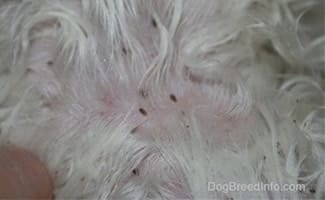
Dog lice are insects with a flat body and 6 legs. Each leg has a claw-like hook that helps them adhere to the hair. Adult lice are around 3 millimeters long, which is big enough to see with the naked eye.
Nymphs are harder to see because they’re smaller than adults, but they look the same. Nits look a lot like dandruff: tiny white specks on the hair. However, nits stick to the hair, whereas dandruff shakes off easily.
If you’re concerned that you won’t be able to tell if your dog has lice or fleas, rest assured it’s easy to tell the difference. Lice are browner in color, compared to black fleas, and lice move very slow compared to scurrying fleas.
What Are The Symptoms?
Here’s a list of things to look out for if you suspect your dog has lice.
- Lice in hair
- Nits in hair
- Itchiness
- Scratching
- Matted coat
- Rough, dry skin patches
- Small wounds
- Red, infected skin patches
- Hair loss
How Do You Treat It?
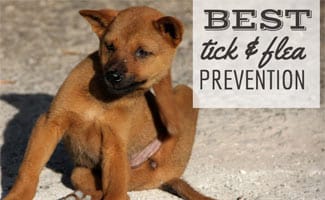
In severe cases, your dog may have skin damage from scratching. It’s essential to take your dog to the vet if they end up with a scratch wound or bacterial infection since antibiotics might be necessary.
1. Kill The Lice
To kill the lice, you may want to consider using an insecticide. Commonly used insecticides like fipronil, imidacloprid, and selamectin can all be effective. There are several products you can buy, like Frontline Spray and Advantage Spray that contain insecticides.
You don’t want to harm your dog, and some typical insecticides are incredibly harmful to cats and other small pets that you may have in your home. That’s why it’s vital to reach out to your vet about what they think is best. Also, insecticides will not kill the lice eggs.
If you’re looking for a home remedy for getting rid of lice, you can consider a homemade flea and tick preventative treatment. It may help kill some of the lice and prevent them in the future. Again, make sure you check with your vet before you begin any treatment.
2. Remove The Lice And Eggs
If your dog is infested with lice, shaving your dog is an excellent way to remove lice and eggs. For a mild case, you can use a special comb. This fine-tooth comb will remove the attached lice and eggs from your dog’s hair. Because you can’t kill the eggs with insecticides, the comb is the best way to remove them. You’ll need to comb regularly for a month or more to ensure complete lice eradication.
3. Clean Your Home
It’s crucial to clean bedding and any areas where your dog hangs out. Machine wash as much as you can and wipe down other areas thoroughly. This cleaning will prevent the lice from living off of your dog and being able to reattach.
Does Your Dog Have Lice?
In this 4-minute video from veterinarian Dr. Jones, he talks about how you can tell if your dog has lice.
Other Skin Irritants
Dog lice can be an uncomfortable and challenging experience for you and your dog. Knowing what to look for and understanding how to deal with it will help you catch it early and treat your dog.
Dog lice are not the only thing that can irritate your dog’s skin. Read our article on 7 common dog skin problems so you can learn how to recognize the symptoms and treat your dog quickly and safely.
What symptoms has your dog experienced that made you wonder about dog lice?




